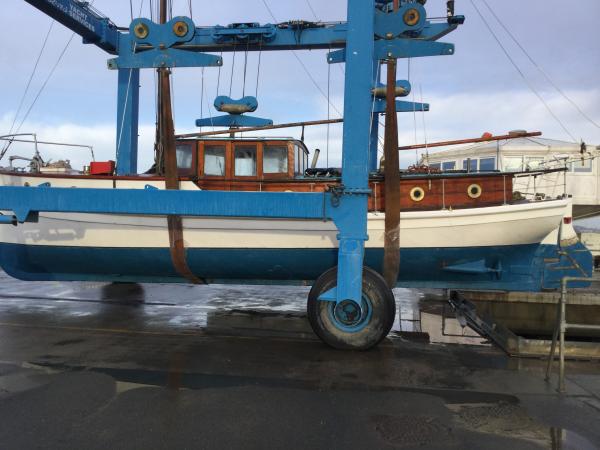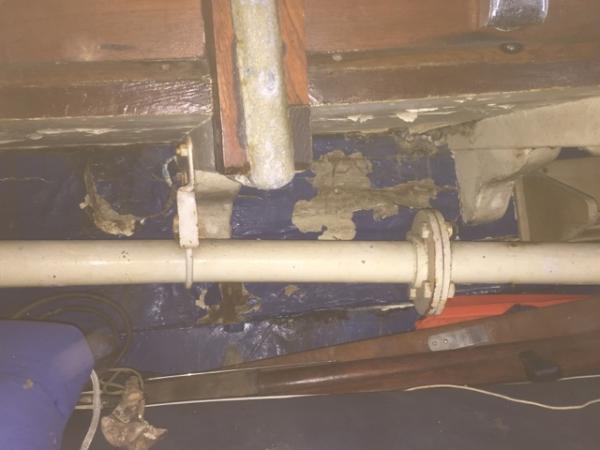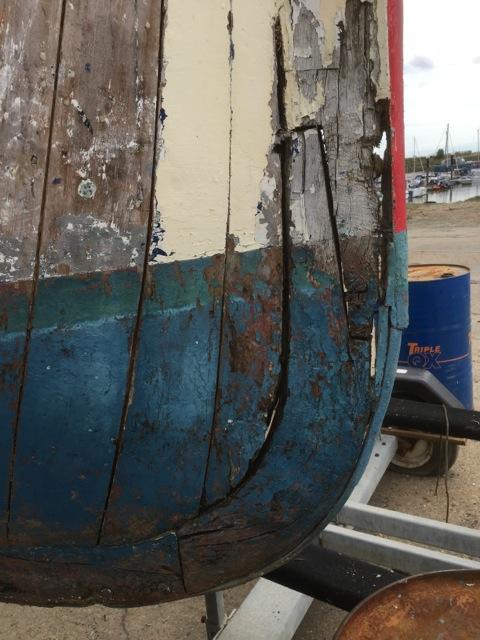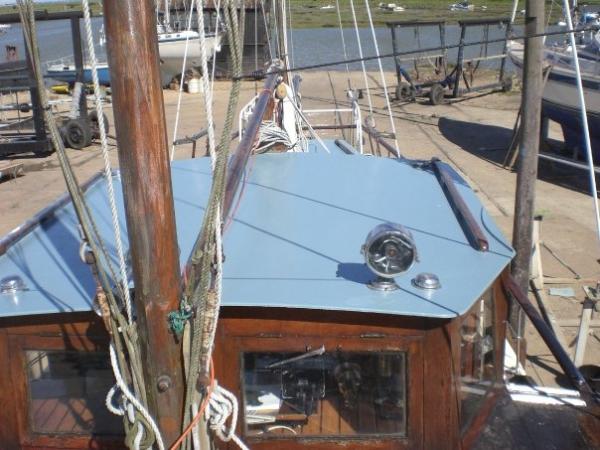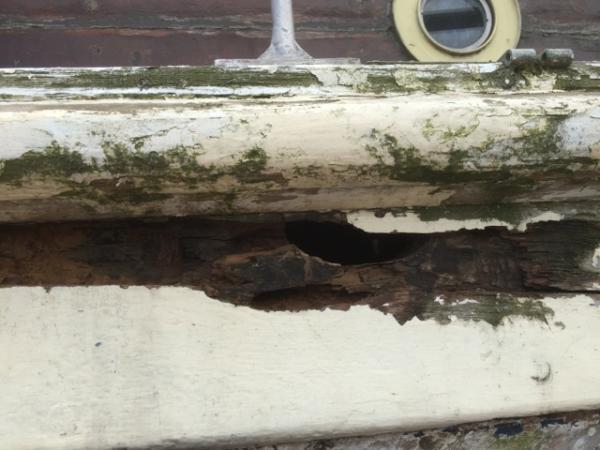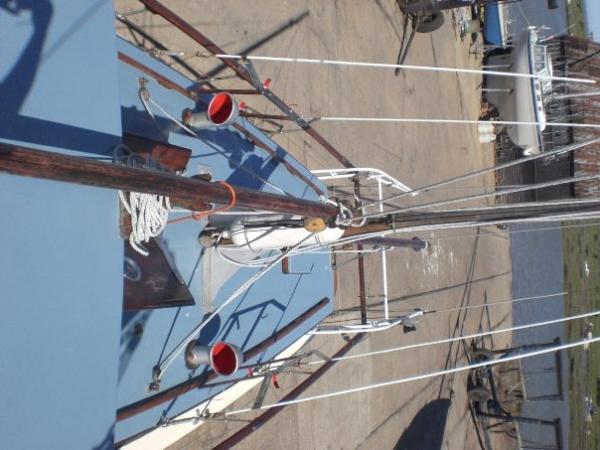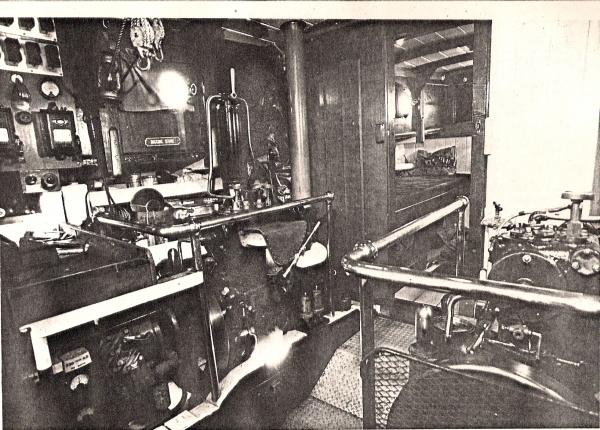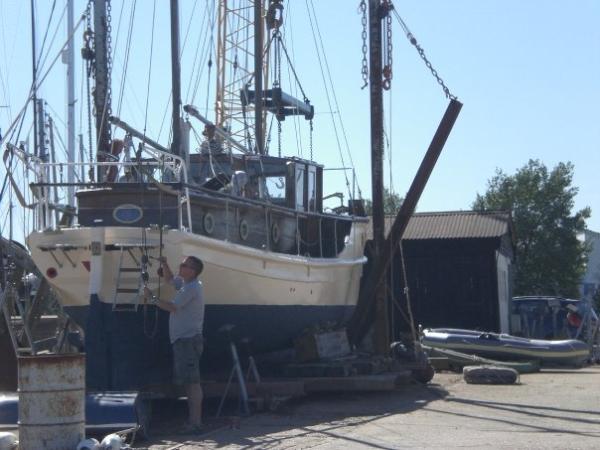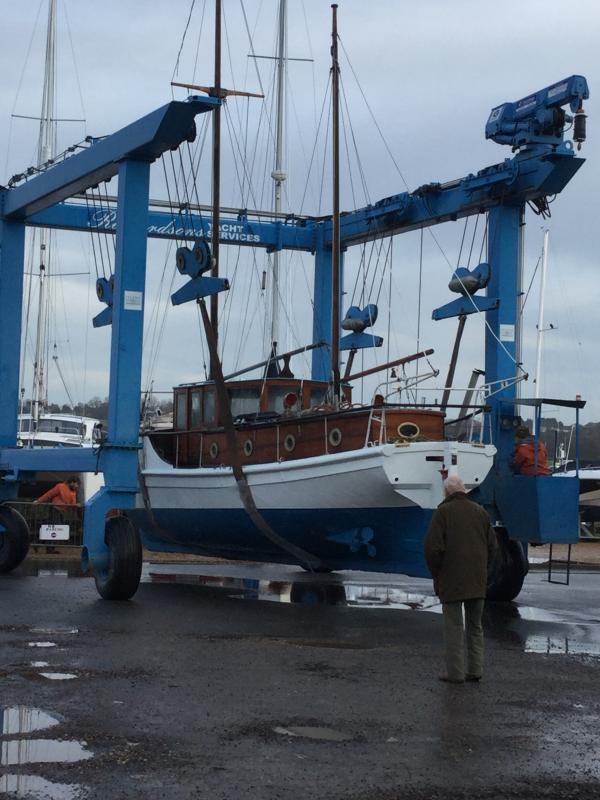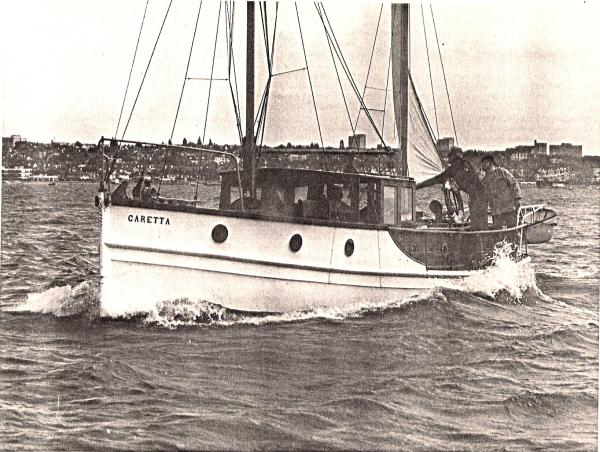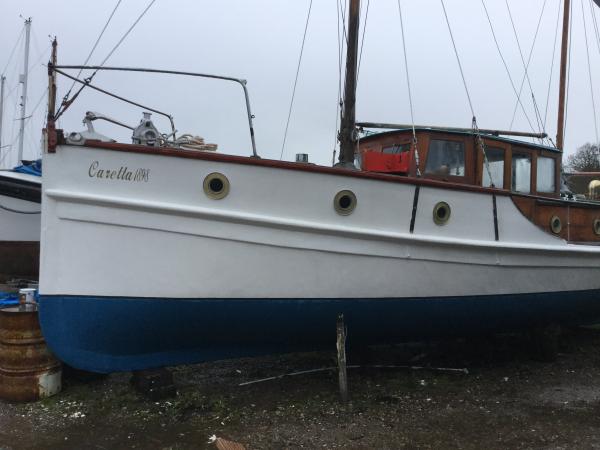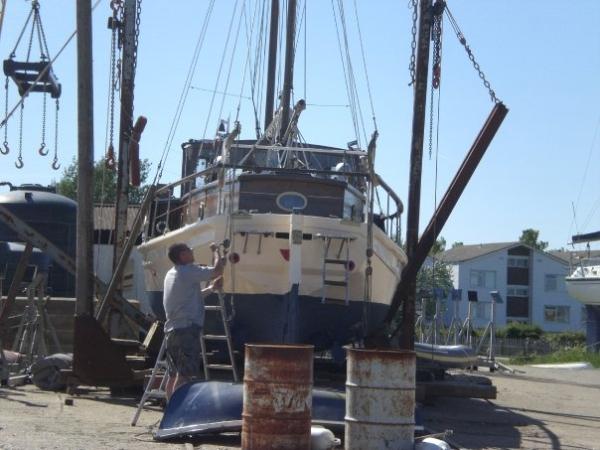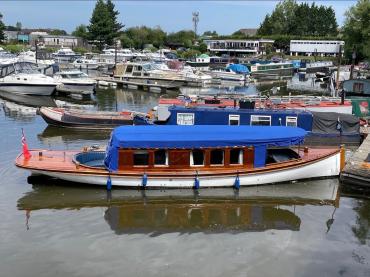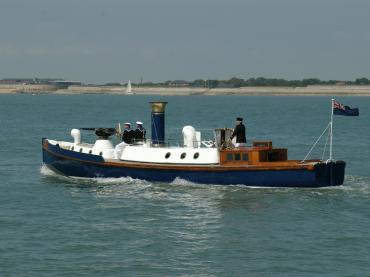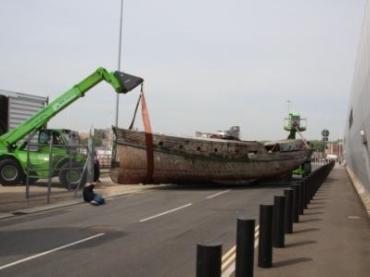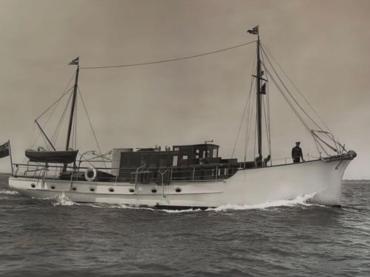

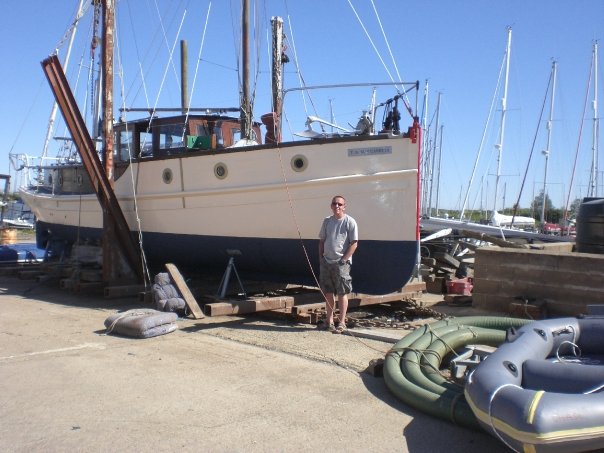
Details
Construction
Dimensions
History
CARETTA was launched in 1898 at Devonport Dockyard, part of a new breed of small armed boats that were designed to protect the fleet at anchor and allow armed patrols. CARETTA would have been assigned to a battleship or heavy cruiser.
She was fitted with two steam engines to driver her twin screws, but also with a sailing rig to help stabilise the vessel in rough conditions. It is unlikely that this rig was ever used for propulsion, it would need extremely strong winds to get the vessel's 15tons to move.
CARETTA was fitted with a 'bow chaser' gun that was mounted in the middle of her fore deck. After comissioning she was sent to the Boer War where she served as a river patrol boat. On return she was assigned to the fleet. During the lead up to the First World War, she effectively became obsolete as more powerful armed patrol boats were developed. These had more efficient engines and heavier armament.
In 1915, due to her expendability, CARETTA was assigned to the fleet and sent to the Dardanelles for the landing of troops. She had her bow chaser removed and her gun mount was moved to the fore peak. She was then fitted with a Maxim machine gun to give her a higher rate of firepower and allow her to cover troops landing on the beaches at Gallipoli. One of the photographs is believed to show CARETTA at Anzac Cove - her twin funnels are shown. Her Gun Mount is still on board today and is situated under the galley worktop.
CARETTA returned to serve as an officer's launch at her home port. After the War, the Navy tried to fit her with several internal combustion engines, but all the results were unsatisfactory.
In 1929 she was sold to a marine biologist who lived in Putney, London. He commissioned Gibbs & Sons of Teddington, to convert her into a private motor yacht. She was fitted with two Thorneycroft DB2 handy billy engines christened 'Samson' and 'Delilah'. These proved much more satisfactory and are still fitted in CARETTA to this day.
During the years up to 1939 she was sailed around the Thames, Channel and North Sea but her new owner. During the Second World War she was in service and moored at Putney.Althugh not confimred it is believed she was seized by the admiralty for use in Operation Dynamo and her masts were removed prior to departure. Nothing is known about her role in the Operation, but after it was over she was collected form Ramsgate and her port engine, 'Delilah', was found to be seized and she was described as being 'in a rough condition'. It is believed she is shown in the photograph being towed down the Thames after being requisitioned (fourth vessel from the bottom on the right).
Due to her damaged engine and lack of available spares, CARETTA was taken out of commission for the rest of the War.
In 1969 she was sold to her second owner and then again in 2002, cruising for many years on the River Blackwater.
Under new ownership in 2019, it is intended that the vessel will undergo restoration work.
Significance
1. What is the vessel’s ability to demonstrate history in her physical fabric?
Evidence for designs, functions, techniques, processes, styles, customs and habits or uses and associations in relation to events and people. How early, intact or rare these features are may impact on significance.
CARETTA was built as a 37 foot sailing pinnace fitted with two steam engines to drive her twin screws. She was twin-funneled, but was also fitted with a sailing rig to help stabilize her in rough conditions. As a sailing pinnace CARETTA was part of a new breed of small armed boats that were designed to protect the fleet at anchor and provide armed patrols. She was fitted with a 'bow chaser' gun that was mounted in the middle of her fore deck. For service during the First World War she had her bow chaser removed, and her gun mount transferred to the fore peak. She was then fitted with a Maxim machine gun to give her a higher rate of firepower and allow her to cover troops landing on the beaches at Gallipoli. Her gun mount is still on board today and is situated under the galley worktop. After the First World War, the Navy tried fitting CARETTA with several internal combustion engines, but the results were unsatisfactory. In 1929, she was converted into a private motor yacht and fitted with two Thorneycroft DB2 handy billy engines christened 'Samson' and 'Delilah' which remain with the vessel today. In 2015, she was being re-caulked and there was evidence that the stem, some deck timbers, rudder and cabin roof needed replacement.
2. What are the vessel’s associational links for which there is no physical evidence?
Associations with people or places. Off-ship research.
CARETTA has associations with the Devonport area where she was launched in 1898. She has international significance being a rare survivor from the Boer War (1899-1902) where she served as a river patrol boat and also part of the fleet landing troops at the Dardanelles during the First World War in 1915. CARETTA went on to serve during the Second World War and it is believed she was seized by the Admiralty for use in Operation Dynamo (the 1940 evacuation from Dunkirk), with her masts removed prior to departure. Nothing is known about her role in the Operation, but afterwards she was collected from Ramsgate where her port engine was found to be seized and so she was taken out of commission or the rest of the War. She is not listed on the Association of Dunkirk Little Ships Register and so her service at Dunkirk has not been confirmed. She has been recorded on the National Register of Historic Vessels since 2009.
3. How does the vessel’s shape or form combine and contribute to her function?
Overall aesthetic impact of the vessel, her lines, material she was built from and her setting. Does she remain in her working environment?
CARETTA is a bluff bowed pinnace with a raked straight stem and two masts, designed as a fighting vessel suitable for use in shallow waters. An image of her at Gallipoli in 1915 indicates that her hull lines remain unchanged since her original function, with the exception of the loss of two curved trim strips at the transom. These would have been removed during her conversion to a yacht when a plank rubbing strip was fitted instead. However, her cabin and superstructure reflect her subsequent role as a private yacht. CARETTA is undergoing further conservation work and is intended to remain in operational use.
Source: NHS-UK team, 02 November 2016.
This statement was developed as part of the Heritage Lottery funded First World War project. http://www.ww1britainssurvivingvessels.org.uk/
Key dates
-
May 2018
Vessel currently for sale
Own this vessel?
If you are the owner of this vessel and would like to provide more details or updated information, please contact info@nationalhistoricships.org.uk

